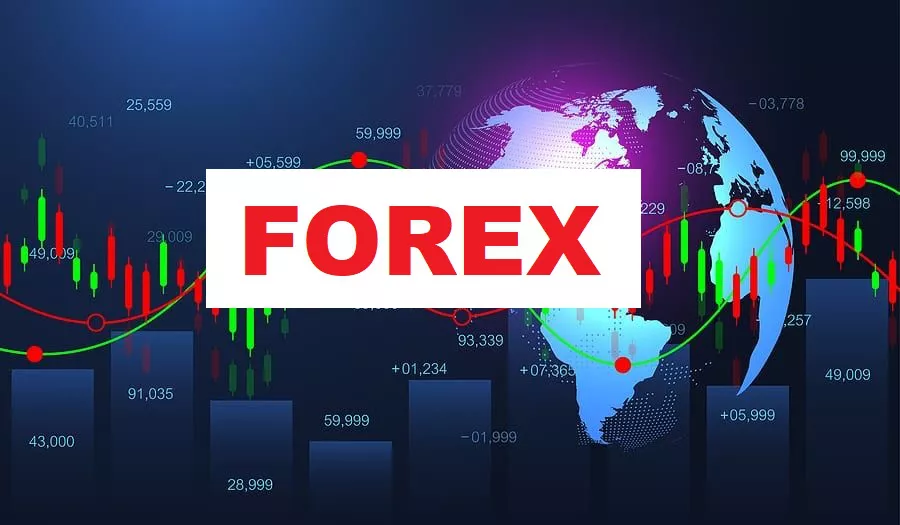In the complex and often volatile world of stock trading and technical analysis, various indicators and patterns are used by investors and analysts to predict the future movement of stock prices. One such concept that has gained significant attention is the “death crossover.” This term might sound a bit ominous, and rightly so, as it is often associated with a potential shift in the market sentiment and a possible downward trend in a stock’s price. Understanding what a death crossover is, how it is calculated, and what its implications are can be extremely valuable for anyone involved in stock market investing, whether they are seasoned traders or novice investors looking to make more informed decisions.
Definition and Calculation
1. The Basics of Moving Averages
To understand the death crossover, we first need to understand moving averages. A moving average is a statistical calculation that smooths out the price data of a stock over a specific period. It is used to identify trends and filter out the short-term fluctuations or “noise” in the stock price. There are different types of moving averages, but the two most commonly used in the context of the death crossover are the simple moving average (SMA) and the exponential moving average (EMA). The SMA is calculated by adding up the closing prices of a stock over a certain number of periods and then dividing by that number of periods. For example, a 50-day SMA would add up the closing prices of the last 50 trading days and divide by 50. The EMA gives more weight to the recent prices, making it more responsive to the latest market movements.
2. The Death Crossover Itself
The death crossover occurs when a shorter-term moving average crosses below a longer-term moving average. Typically, the 50-day moving average and the 200-day moving average are used for this analysis. When the 50-day moving average dips below the 200-day moving average, it is considered a death crossover. For instance, if the 50-day SMA of a particular stock was $50 and the 200-day SMA was $52, and over a period of a few trading days, the 50-day SMA declined to $49 while the 200-day SMA remained at $52 or slightly changed, a death crossover has taken place. This crossing is seen as a signal that the short-term trend of the stock is turning negative and may potentially lead to a more extended period of downward price movement.
Significance and Implications
1. Market Sentiment and Psychology
The death crossover has significant implications for market sentiment. It is often seen as a bearish signal by many investors. When this crossover occurs, it can create a sense of pessimism in the market. Traders and investors who follow technical analysis may start to sell their holdings or refrain from buying the stock. This selling pressure can further drive down the stock price. For example, if a well-known and widely held stock experiences a death crossover, institutional investors may start to reduce their positions. Retail investors who notice this may also follow suit, fearing a further decline in the stock’s value. This collective behavior can turn a potential downward trend into a self-fulfilling prophecy.
2. Impact on Investment Strategies
For long-term investors, a death crossover may prompt them to reevaluate their investment thesis. If they were holding a stock with the expectation of long-term growth and a death crossover occurs, they may consider reducing their exposure or selling the stock altogether. For example, an investor who had planned to hold a particular tech stock for several years might change their mind if a death crossover indicates a possible shift in the company’s growth prospects. Short-term traders, on the other hand, may use the death crossover as a signal to enter short positions. They would sell the stock with the expectation of buying it back at a lower price in the future. Hedge funds and professional trading firms often have algorithms and trading strategies that incorporate the death crossover as a trigger for certain trades.
Historical Analysis and Examples
1. Past Market Crashes and Downturns
Looking back at history, the death crossover has been observed before major market crashes and downturns. For example, prior to the 2008 financial crisis, many stocks experienced death crossovers. The housing market collapse and the subsequent financial turmoil led to a widespread decline in stock prices. Stocks of banks, real estate companies, and other sectors showed death crossovers as the market sentiment turned extremely negative. Another example is the dot-com bubble burst in the early 2000s. As the overvalued tech stocks started to correct, death crossovers were seen in many of these companies’ stock charts. This signaled the end of the speculative frenzy and the beginning of a long period of price declines and market consolidation.
2. Case Studies of Individual Stocks
Let’s consider the case of a well-known retail stock. In 2015, the stock had been on a steady upward trend for a few years. However, in the second half of the year, due to a combination of factors such as increased competition and a slowdown in consumer spending, the 50-day moving average started to approach the 200-day moving average. Eventually, a death crossover occurred. After the crossover, the stock price declined by about 30% over the next six months. The company had to announce store closures and cost-cutting measures to try to turn around its fortunes. Another example is a pharmaceutical stock. When a major drug it was developing failed to get regulatory approval, the stock price started to fall. The 50-day moving average quickly crossed below the 200-day moving average, and the stock continued to decline as investors lost confidence in the company’s future growth prospects.
Limitations and False Signals
1. Market Volatility and False Alarms
One of the main limitations of the death crossover is that it can produce false signals, especially in a volatile market. In a market where prices are fluctuating wildly, the moving averages can cross each other more frequently, leading to what may seem like a death crossover but could just be a short-term blip. For example, during a period of heightened geopolitical tensions or a sudden market-wide sell-off due to an unexpected event like a natural disaster, the 50-day moving average might cross below the 200-day moving average, but the stock may quickly recover and resume its previous trend. This is why it is important not to rely solely on the death crossover as a trading signal but to consider other factors such as the company’s fundamentals, industry trends, and overall market conditions.
2. Fundamental Analysis vs. Technical Analysis
The death crossover is a technical analysis tool, and it does not take into account the fundamental aspects of a company. A company may have a strong balance sheet, excellent management, and a promising product pipeline, but still experience a death crossover due to short-term market fluctuations or external factors affecting the stock price. For example, a company in the renewable energy sector may be well-positioned for long-term growth due to increasing demand for clean energy. However, if there is a sudden sell-off in the broader market or a delay in a major project, the stock may show a death crossover. In such cases, investors who focus only on the technical signal may miss out on the long-term potential of the company.
Combining with Other Indicators
1. Volume and Momentum Indicators
To improve the accuracy of the death crossover signal, it is often beneficial to combine it with other indicators. Volume indicators can be used. If a death crossover occurs with high trading volume, it may add more weight to the bearish signal. For example, if a large number of shares are being sold as the 50-day moving average crosses below the 200-day moving average, it indicates a stronger conviction among investors that the stock is headed downward. Momentum indicators such as the Relative Strength Index (RSI) can also be used. If the RSI is in a bearish range (below 30) when the death crossover occurs, it further supports the view that the stock has lost its upward momentum and is likely to decline.
2. Fundamental Metrics
In addition to technical indicators, fundamental metrics can be considered. For example, looking at a company’s earnings growth, debt levels, and profit margins. If a company has a history of strong earnings growth but experiences a death crossover, it may be worth investigating further to see if the decline is a temporary setback or a sign of more serious problems. If the company’s fundamentals remain solid, it may be a case of a false signal caused by market-wide factors rather than issues specific to the company.
Conclusion
The death crossover is a significant concept in the world of stock trading and technical analysis. It is a signal that occurs when a shorter-term moving average crosses below a longer-term moving average, typically the 50-day and 200-day moving averages. It has implications for market sentiment and investment strategies, often signaling a potential downward trend in a stock’s price. However, it has limitations, including the possibility of false signals, especially in volatile markets, and its lack of consideration for a company’s fundamentals. By combining the death crossover with other technical and fundamental indicators, investors and traders can make more informed decisions. While it is not a foolproof predictor of a stock’s future movement, understanding the death crossover and its nuances can be a valuable tool in navigating the complex and ever-changing stock market.
Related topics:

































